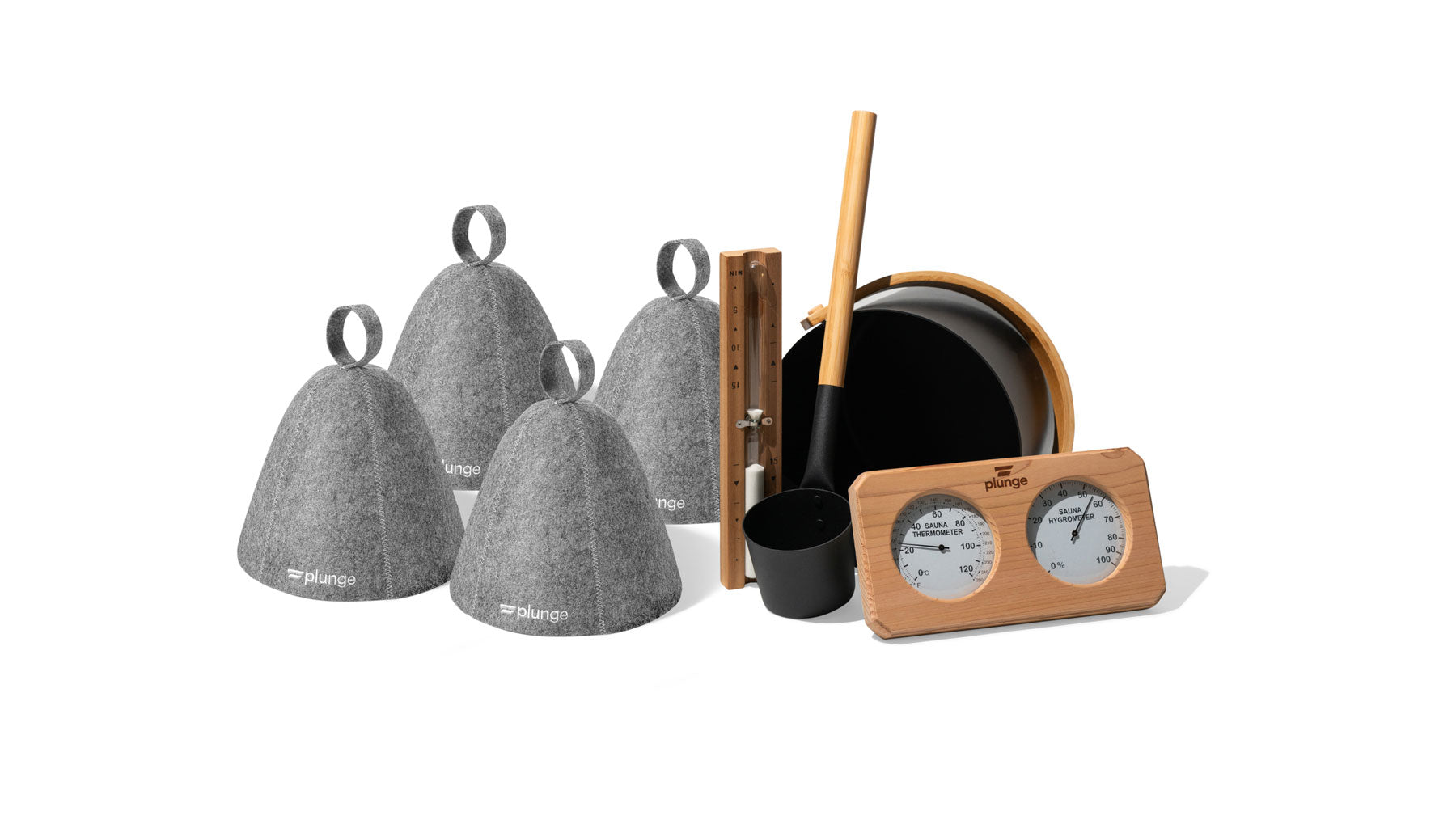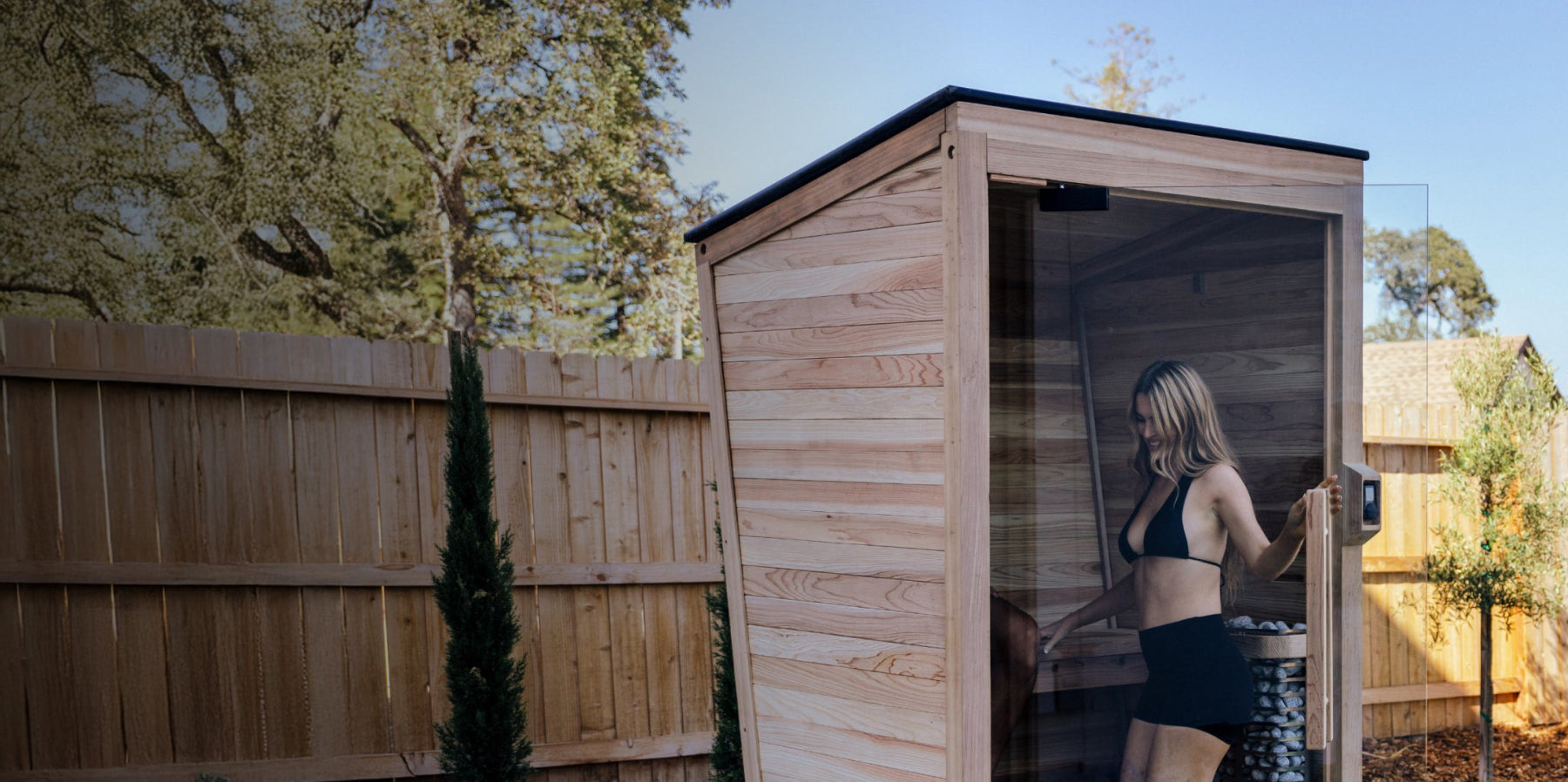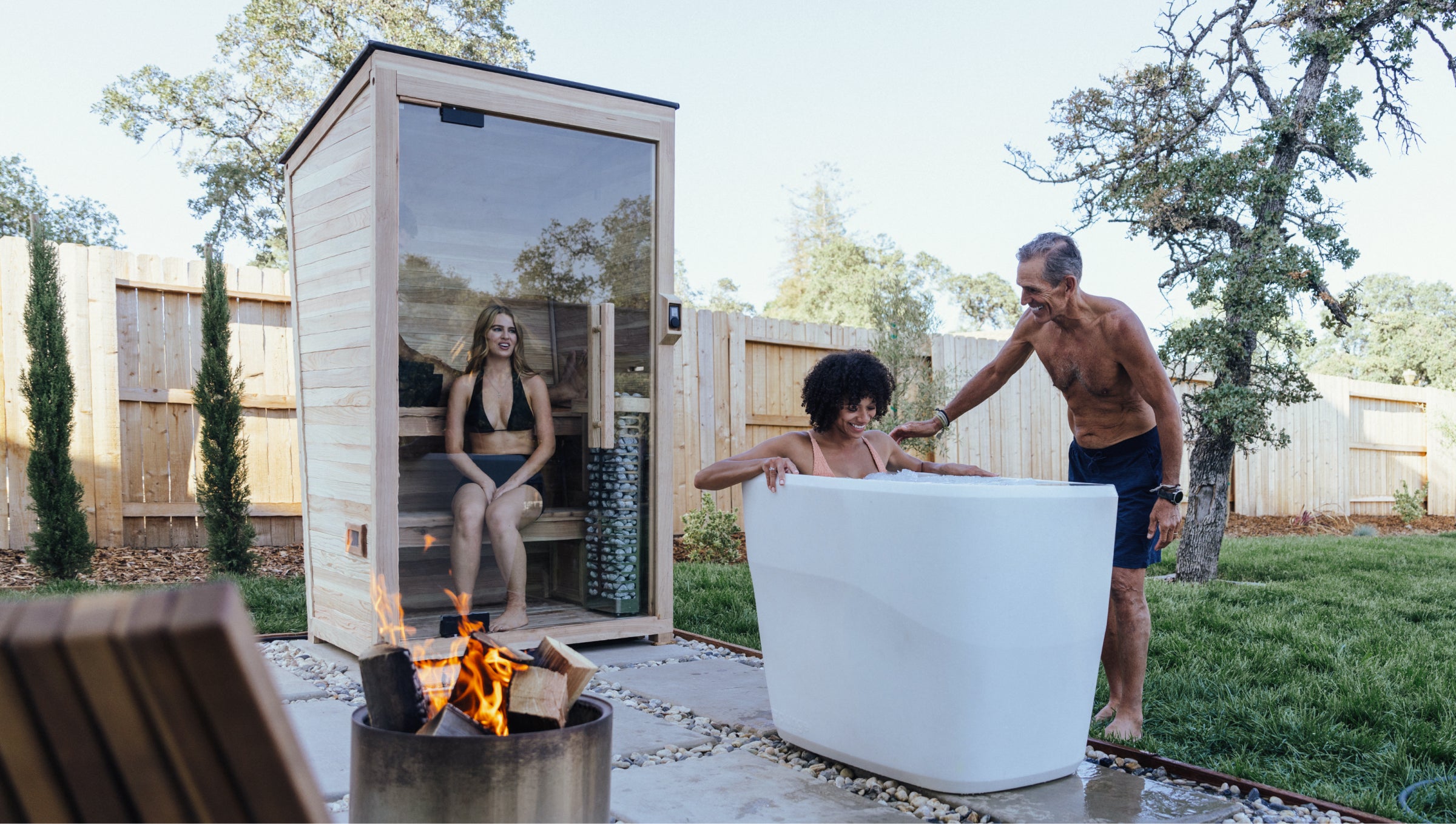
Box Breathing Benefits to Calm the Mind & Improve Your Health
In the quest for optimal health and well-being, it's easy to overlook one of the most fundamental aspects of our existence: our breath. More specifically, the way we breathe can profoundly impact our mind and body.
A simple yet effective technique known as box breathing can offer numerous benefits. Let's examine these advantages and how to safely practice this technique in contrasting environments like saunas and ice baths.
What is Box Breathing?
Box breathing, also known as square or four-square breathing, is a deep breathing technique used by everyone from elite athletes to Navy SEALs to manage stress, improve focus, and promote relaxation. It's straightforward and can be done anywhere.
The process involves inhaling, holding your breath, exhaling, and holding your breath again, each for an equal count, thus forming a "box" pattern.
Box Breathing Benefits
So why the hype around this technique? The benefits of box breathing are not just anecdotal but are backed by science.
- Reduces Stress: Box breathing activates the parasympathetic nervous system, also known as the "rest and digest" system, which helps calm the body and mind during stressful situations.
- Improves Focus: Regular box breathing can improve mental clarity and focus by increasing cerebral blood flow and oxygenation.
- Lowers Blood Pressure: Studies show that controlled breathing techniques can help manage high blood pressure.
- Enhances Overall Mood: Box breathing's slow, rhythmic pattern activates the body's relaxation response, which helps reduce negative emotions and improve mental well-being.
Practicing Box Breathing Exercises in a Sauna
Sauna bathing and box breathing can be a powerful combination. The heat in the sauna enhances blood circulation, while the focused, controlled breathing facilitates relaxation and stress relief. Here's how to breathe in a sauna safely with the box breathing method:
- Find a comfortable position.
- Close your eyes and slowly inhale through your nose to the count of four.
- Hold your breath for a count of four.
- Exhale slowly through your mouth for a count of four.
- Hold your breath again for a count of four.
- Repeat this cycle for as long as you're comfortable.
Remember, it's crucial to monitor your body and leave the sauna if you start to feel dizzy or uncomfortable. Stay hydrated before, during, and after the sauna session to prevent dehydration.
Using the Box Breathing Technique in an Ice Bath
On the opposite end of the temperature spectrum, ice baths paired with box breathing offer a unique health-boosting experience. Cold exposure can stimulate the immune response and reduce inflammation, while box breathing can enhance the body's ability to adapt to stress. Here's how to breathe in an ice bath using this technique:
- Slowly enter the ice bath to allow your body to adjust to the cold.
- Once settled, close your eyes and inhale slowly through your nose to the count of four.
- Hold your breath for a count of four.
- Exhale slowly through your mouth for a count of four.
- Hold your breath again for a count of four.
- Repeat this cycle for as long as you're comfortable.
The cold water can make your breath hitch, but try to maintain the rhythm of your box breathing. Always listen to your body, and if you start to feel too uncomfortable, leave the bath.
5 Tips for Mastering Box Breathing
Now that you know what box breathing is and how it helps to improve both the mind and body, it’s time to start integrating it into your routines. With time and practice, you can use box breathing when your mind is dealing with stress or anxiety and your body doesn’t know what to do. To help you improve on the technique, here are some additional tips:
1. Maintain A Steady Rhythm
When starting the box breathing exercise, make sure you keep your inhales, exhales, and holds at the same time. We recommend beginning with a comfortable four-second count, but feel free to adjust as needed.
2. Make It A Part Of Your Daily Routine
To improve, practice box breathing consistently on a daily basis. The best way to do this is to make it a part of your morning routine to help set a peaceful energy for the day.
3. Use Visual Aids
As you breathe, imagine a square box. As you inhale for four seconds, visualize filling up the box. When you exhale, imagine the box emptying. Once it’s “empty”, hold your breath for four more counts.
4. Try a Sauna For Deeper Breaths
As the sauna heat intensifies, consider slowing down your box breathing to avoid overexertion. Instead of a strict 4-second count, try a 6-second inhale, hold, and exhale cycle. This allows for deeper breaths without straining and lets you focus on controlled breathing despite the heat.
5. Maintain Control In An Ice Bath
Box breathing can be used as preparation before an ice bath to manage your anxiety. However, by focusing on slow, steady exhales, you can use it during an ice bath session to manage and overcome any discomfort.
Box Breathing: FAQs
Why Do Navy Seals Use Box Breathing?
Navy SEALs use box breathing to stay focused and calm while maintaining composure during high-pressure situations. Though the exact origins of Navy SEALs using box breathing are unclear, it likely comes from the influence of martial arts and yoga practices (both of which have a heavy focus on breathing techniques) that have been a part of military training for decades.
What is 4-Square Breathing?
4-square breathing, square breathing, and box breathing are all the same type of breath exercises, but with different names. Put simply, these names come from the four equal steps of the breathing cycle.
Do You Breathe Through Your Nose or Mouth When Box Breathing?
It’s best, and most effective, to breathe through your nose during box breathing. Breathing through your nose filters the air, sending signals to your body to relax. On the other hand, breathing through your mouth can make you lightheaded and disrupt the calming rhythm. If you find nasal breathing difficult, try occasional short mouth breaths during the exhale phase only.
How Long Should I Box Breath For?
Typically, your box breathing sessions should last three to five minutes. In the beginning, start with shorter sessions and gradually increase the length as you become more comfortable. When it comes to the effectiveness of box breathing, remember that it’s not so much the length of sessions but more about practicing with regular consistency!
Does Box Breathing Make You Sleepy?
Box breathing can induce relaxation and be a helpful step in your evening routine, but it won’t be the cure to help you fall and stay asleep. If you practice this breathing technique before bed, it can help calm the mind so you can fall asleep faster. On the other hand, when done during the day, box breathing should leave you feeling calmer and more focused.
How to Make the Most Out of Breath Exercises
Box breathing is a powerful tool that can be incorporated into various wellness practices, from sauna use to ice baths and beyond. This simple yet impactful technique has profound benefits, rooted in science, for your overall health. So, whether you're chilling in an ice bath or sweating in a sauna, don't forget to breathe. You might just discover a new level of wellness and relaxation!
As you embark on your health and wellness journey, consider exploring our revolutionary Plunge Evolve XL or our cedar and hemlock at-home saunas for the ultimate relaxation experience. All of our cold plunge tubs and saunas are available with flexible financing options that work for you.
We’ve also teamed up with TrueMed to give you the ability to use your Health Savings Account (HSA) or Flexible Spending Account (FSA) for your Plunge or Sauna purchase. Head to this page to learn more about how you can put your pre-tax dollars to work and unlock up to 40% in savings!























